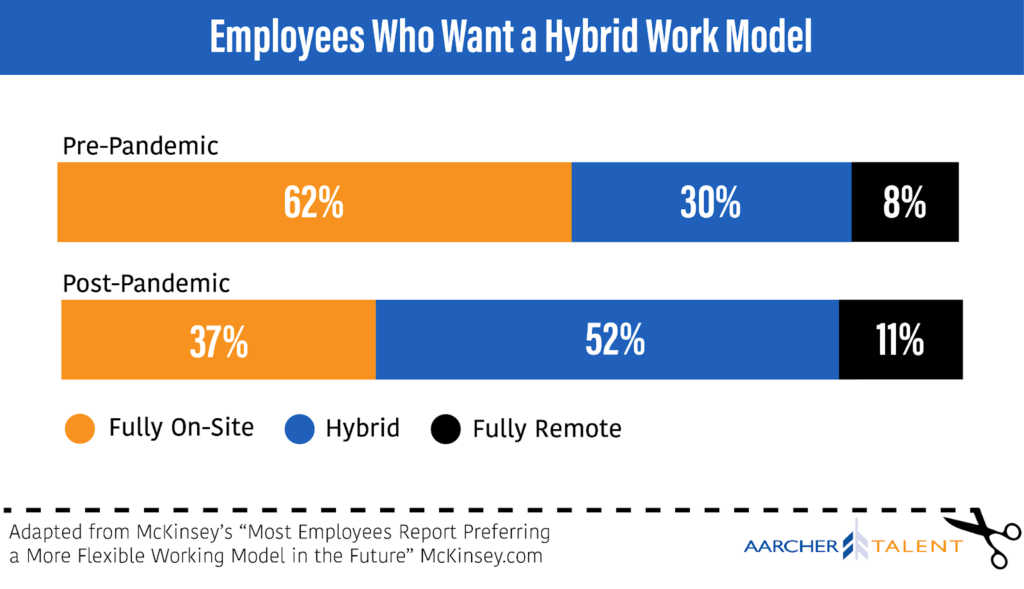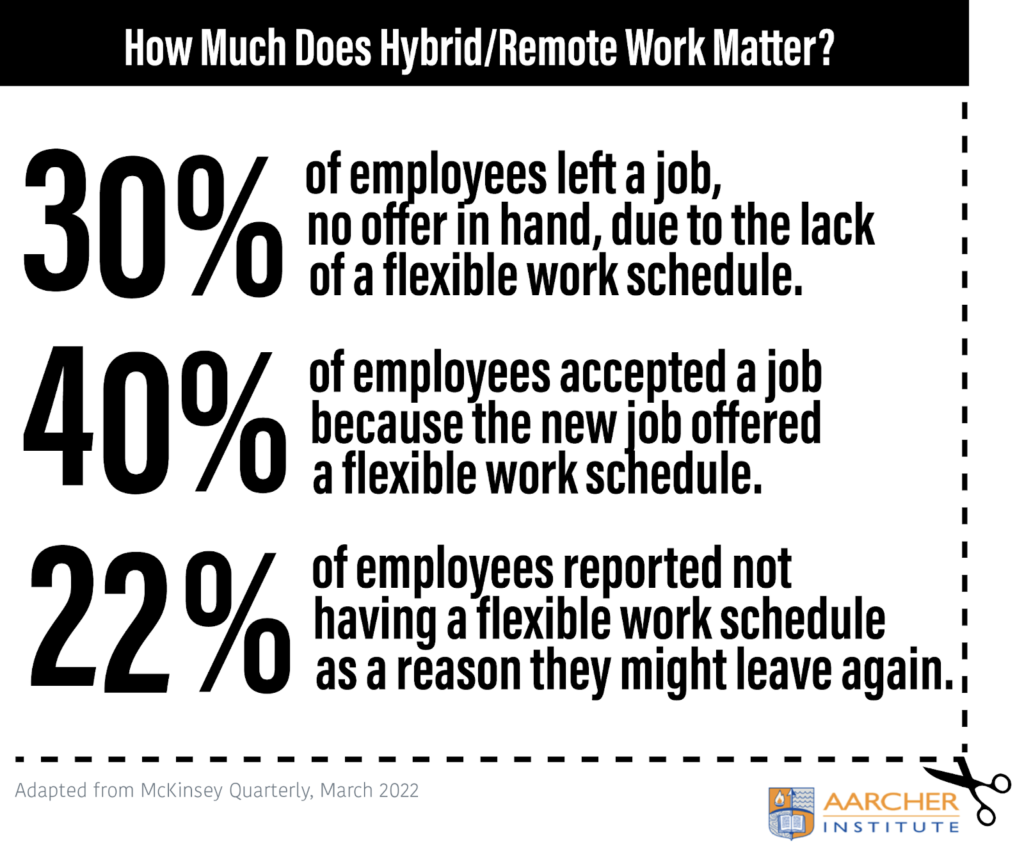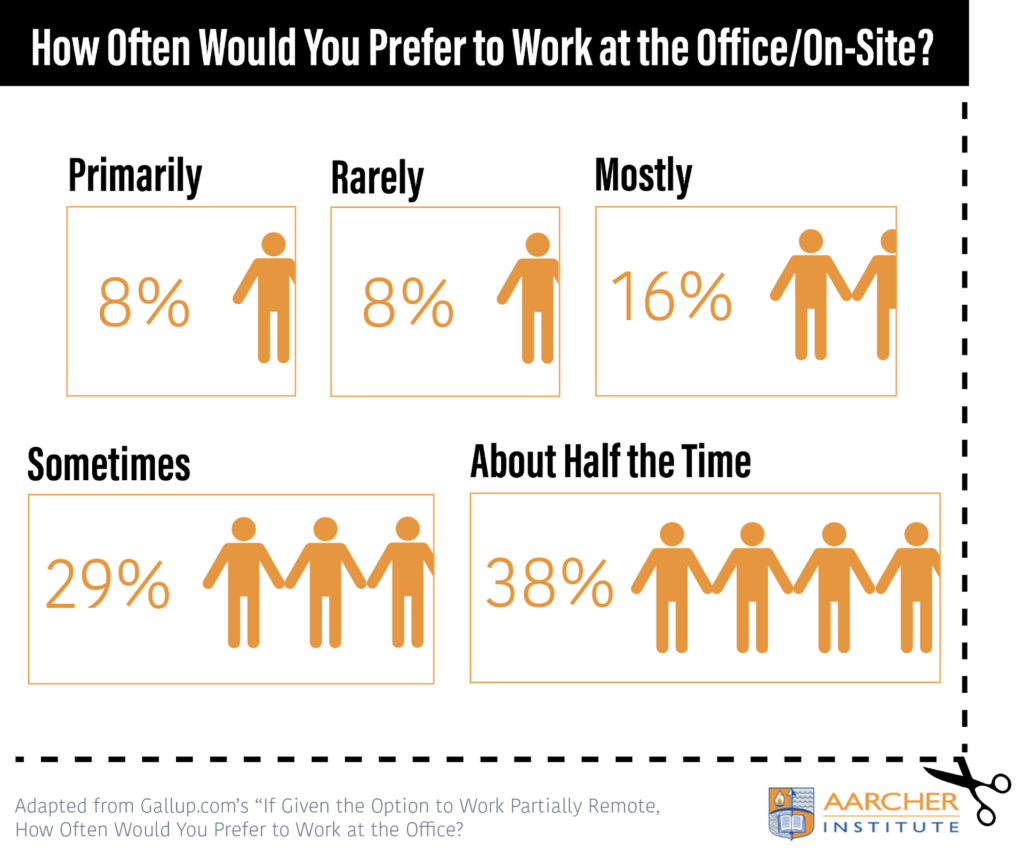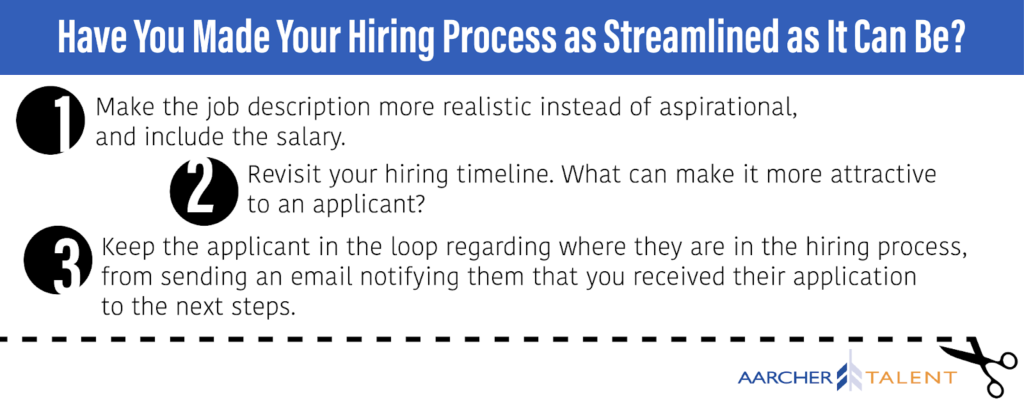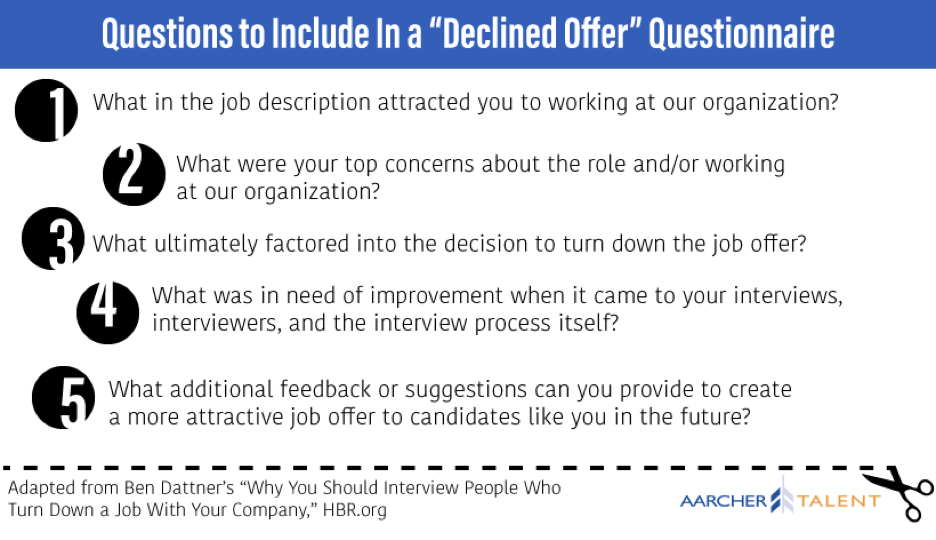This is Part 4 of 4 in the series “Hybrid Work in the EHS Industry.”
As 2023 winds down, hybrid work is still going strong. Work culture has changed, and it should be seen as an opportunity to change accordingly.
This means that EHS managers should be more strategically focused. They need to look at work culture and the perception of value, as well as problem-solving, in a way that suits the hybrid model.
In the discussion ahead, keep in mind that moving into a hybrid model is a process. Think about creating a step-by-step game plan, where each step is monitored for implementation, understanding, and ultimately, consistency.
3 Steps to Create Your Own Hybrid Workplace
- Make Sure Your Technology Is Helpful and Not a Headache
- Think about the Company as Micro-Cultures Versus One Big Company Culture
- Managing Efficient Hybrid Teams
Make Sure Your Technology Is Helpful and Not a Headache
Named as the number one element for a successful hybrid environment, good technology, as well as technological support, is a must. Some things to keep in mind for your hybrid workforce:
- Appropriate security based on your company’s needs
- Cloud software where needed to share and access work
- Scheduling software
- Centralized modes of communication
- IT support for hours outside of 9-5
Think about the Company as Micro-Cultures Versus One Big Company Culture
A strong corporate culture does not reflect every team that is part of that company. After all, if Susie from sales is off on a Monday, is Henry in human resources affected?
Instead, think about how to strengthen the team culture versus the company culture, and as Royal DSM figured out, the company sees itself as a flotilla of independently piloted ships versus one large tanker.
One way to do this is to make a concerted effort to get team leaders on board with a hybrid model. Change is hard, which is why managers may dig in their heels and make change uncomfortable. Managers need to be shown that new ways to manage are not the wrong ways to manage. The next section delves into this more.
Managing Efficient Hybrid Teams
When it comes to creating an efficient team in a hybrid model, let clear communication and expectations lead the way:
1. Explain to both remote and on-site employees when they should check their messages, when to send reports, and when they should be available.
2. Think about creating a results-driven workplace where what matters is the results, not how or what time of day they were created.
3. Build into the schedule one-on-one standing meetings for direction and concerns.
In the end, it’s important to think about how much a hybrid model can benefit your EHS employees and even the company. On average, companies are saving approximately $11,000 per year per hybrid worker due to decreased expenses in terms of lower turnover rates, fewer days off, and reduced rents/utilities, according to a study conducted by Global Workplace Analytics. This is one of many good reasons to consider transitioning your company into a hybrid model.
Resources:
20 Hybrid Work Statistics You Need to Know About, Flexas, Flexas.com.
How IT Must Adapt to the Emerging Hybrid Workplace, Galen Gruman, ComputerWorld.com.
Making Hybrid Workplace a Reality in the Manufacturing Environment, Karuna Parmar, SHRM.org.
Promoting Effective Teamwork in a Hybrid Work Model, Lucidspark, LucidSpark.com.
Revitalizing Culture in the World of Hybrid Work, Harvard Business Review, HBR.org.
The Evolving Role of EHS Managers During the Covid-19 Pandemic, Shawn Galloway, FutureofBusinessandTech.com.
What the Future of Hybrid Work Will and Won’t Look Like, According to 27 Business Leaders, Mark Sullivan and Grace Buono, FastCompany.com.
